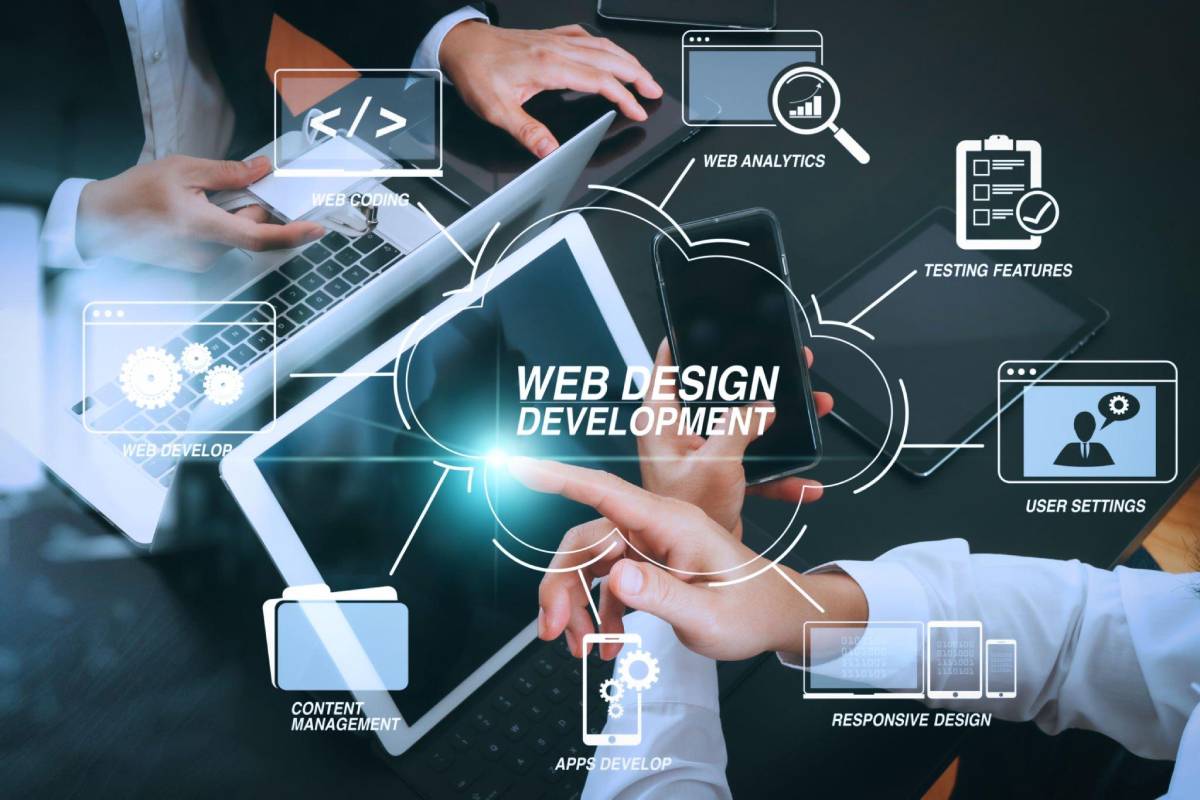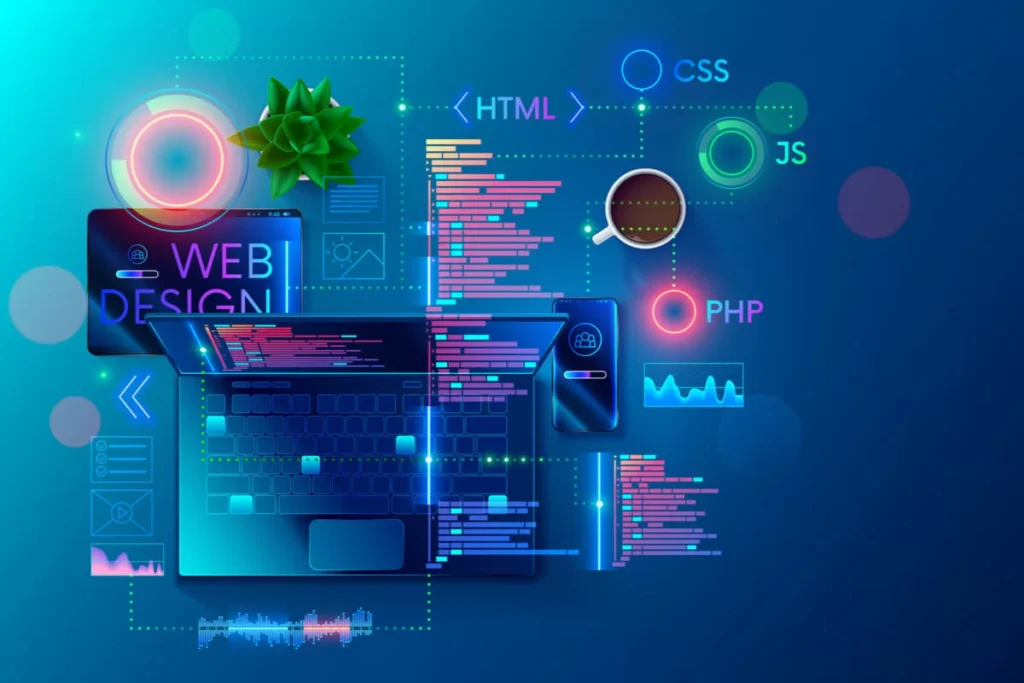The digital landscape is evolving rapidly, and web design is at the forefront of this transformation. As technology advances, so too do the expectations of users. The Future of Web Design will be shaped by a convergence of trends, including artificial intelligence, augmented reality, and a greater emphasis on user experience. With the increasing popularity of mobile devices, responsive design will become even more crucial. Additionally, as concerns about data privacy grow, we can expect to see more secure and personalized web experiences.
The Future of Web Design

The future of web design holds exciting possibilities that can reshape the way users interact with digital content. As technology continues to evolve, designers are presented with novel tools and techniques that can enhance user experience, accessibility, and aesthetic appeal. The Future of Web Design is about creating websites that are not only visually stunning but also functional, engaging, and responsive to user needs.
Increased Focus on User Experience (UX)
The Future of Web Design is heavily focused on enhancing user experience. Design principles are transitioning from aesthetics to functionality, focusing on how users interact with websites. The implementation of user-centered design (UCD) practices ensures that websites cater to the preferences and behaviors of users. By incorporating usability testing and user feedback, designers can build more intuitive interfaces that facilitate seamless navigation.
- Introducing simplified navigation structures can reduce cognitive load on users, making it easier for them to find the information they need.
- Tailoring content based on user behavior and preferences can lead to a more engaging experience. This personalization trend is integral to the future of web design, where artificial intelligence plays a crucial role.
Mobile-First Approach
As mobile device usage continues to dominate, the future of web design emphasizes a mobile-first approach. Designers must prioritize creating responsive designs that function seamlessly across various devices.
- Fluid grid systems and flexible layouts help users access content effortlessly, regardless of screen size. This adaptability is crucial in ensuring that websites perform optimally on smartphones and tablets.
- Designing touch-friendly interfaces includes larger buttons and interactive elements, which cater to the evolving habits of users who prefer mobile browsing.
The Impact of Artificial Intelligence
Artificial intelligence (AI) is shaping the future of web design by introducing intelligent automation and enhancing user interactions.
- AI-driven design tools can streamline the design process, allowing for quick prototyping and iteration. These tools can suggest layouts, color schemes, and typography based on current trends and user preferences.
- The incorporation of chatbots in web design enhances user interaction. These AI-powered tools provide instant support and guidance, improving user satisfaction.
read more: Building Your First Website: A Step-by-Step Tutorial
Emphasis on Accessibility

The future of web design is grounded in accessibility, ensuring that websites are usable for everyone, including individuals with disabilities.
- Adhering to the Web Content Accessibility Guidelines (WCAG) is becoming essential in the design process. By focusing on accessible design, web creators can reach a wider audience and provide equal access to information.
- Incorporating features such as alternative text for images, keyboard navigability, and voice commands can significantly enhance the user experience for all individuals, regardless of their abilities.
Sustainability in Web Design
With growing awareness about environmental issues, the future of web design is leaning towards sustainability. Designers are now tasked with creating eco-friendly web experiences.
- By optimizing website performance and reducing load times, designers can minimize energy consumption associated with web hosting and user access. This practice contributes to lower carbon footprints.
- Choosing hosting providers that prioritize renewable energy and sustainable practices aligns with the broader goals of eco-conscious web design.
The Role of Future Technologies
Emerging technologies like augmented reality (AR), virtual reality (VR), and the Internet of Things (IoT) are influencing the future of web design by providing innovative ways to engage users.
- AR and VR technologies deliver immersive experiences that can be integrated into websites, allowing users to interact with products in real-time, enhancing their consumer journey.
- As IoT devices proliferate, the future of web design will require creating interfaces that connect various devices seamlessly. This integration can facilitate user experiences that span multiple platforms.
read more: Creating Sustainable Websites: Toward a Greener Digital Future
Is web design future proof?

Is web design future proof? This question has become increasingly relevant as technology evolves at a rapid pace. One could argue that the fundamental principles of web design, such as user experience, accessibility, and visual aesthetics, will always remain relevant. However, the tools and technologies used to implement these principles continue to change, requiring designers to adapt and innovate constantly.
Responsive design, for instance, emerged in response to the proliferation of mobile devices and continues to shape how websites are developed. As new devices and screen sizes appear, designs must remain flexible to provide a seamless experience across platforms. Furthermore, the integration of artificial intelligence and machine learning is reshaping how websites interact with users, offering personalized experiences that were unimaginable just a few years ago.
Another consideration is the significance of search engine optimization and the need for web designers to understand algorithms that dictate online visibility. Trends such as minimalism and dark mode have also come and gone, illustrating the fleeting nature of design aesthetics. Ultimately, while certain design principles may withstand the test of time, the industry’s dynamism means that ongoing education and adaptability will be crucial for any designer hoping to create truly future-proof websites. The path forward requires a balance of timeless skills and a willingness to embrace change.
read more: Web Design 101: Everything You Need to Know
In conclusion, The future of web design is bright and promising. As technology continues to evolve, so too will the way we design and interact with websites. By embracing new tools and techniques, we can create more engaging and personalized digital experiences for users.

